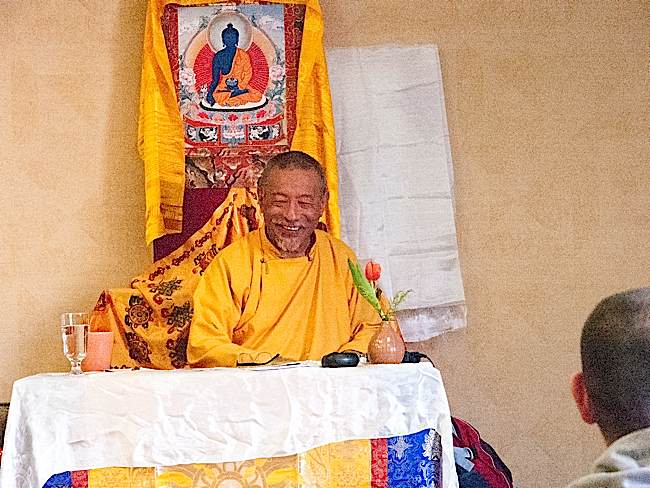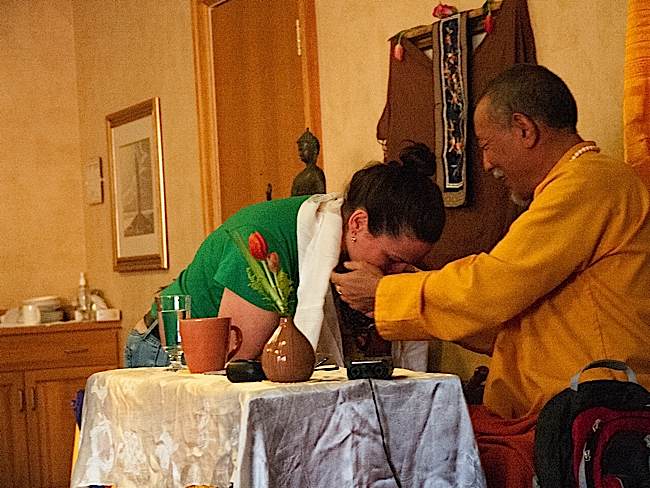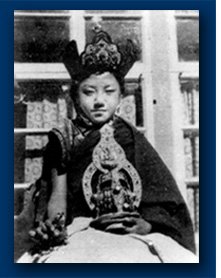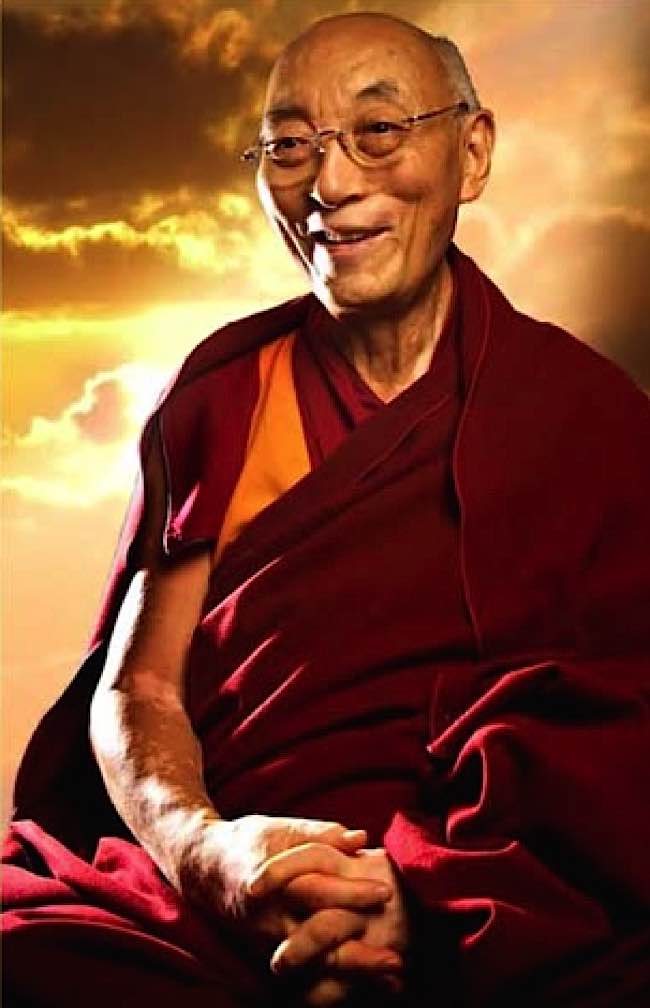
Buddha Weekly: Buddhist Practices, Mindfulness, Meditation. Copyright Buddha Weekly.
Leonardo da Vinci is credited as saying, “While I thought that I was learning how to live, I have been learning how to die.” This may be a discouraging thought for some, but Buddhists view end-of-life meditation as an uplifting and powerful practice.
“Analysis of death is not for the sake of becoming fearful but to appreciate this precious lifetime.” — Dalai Lama [2]
Recently, at Gaden Choling Toronto, in a broad-ranging interview on many topics [1], I asked the most Venerable Zasep Tulku Rinpoche “Why do Buddhists meditate on death?” This led to a spirited and helpful teaching, especially as I had recently experienced the passing of several family members in one year — long, lingering and painful passings.
- During Zasep Rinpoche’s July 2019 Toronto visit, one of his teaching topics is “Meditating on Death and Dying” July 18, 2019. Details below, or on the Gaden Choling Toronto website>>
Zasep Rinpoche’s answer encouraged me to research what other eminent teachers have to say about death meditation. I’ve brought together some teachings from the Buddha, the Dalai Lama, Stephen and Ondrea Levine, Thich Nhat Hanh, Ribur Rinpoche, and also some helpful guidelines from the Journal of Palliative Care.
[For helpful suggestions for Palliative end-of-life caregivers specific to Buddhsits, see the last half of this article.]
Zasep Tulku Rinpoche: “Death can happen at any time… meditating on death is very helpful.”
“Meditating on death and dying is very important,” Zasep Rinpoche said. “Meditating on death and dying helps motivate Dharma practice. Life is too short. Death can happen at any time, you don’t know.”
“I’ve got maybe ten years, fifteen years, maybe twenty years. So, the time goes fast, but death’s going to happen sooner or later. So, meditating on death is very helpful to motivate Dharma practice.”

Event in Toronto July 19, 2019: Meditating on Death and Dying and why it’s important with H.E. Zasep Rinpoche. Event details on Gaden Choling Toronto website>>
Rinpoche added that “meditating on death and dying is helpful for other people. For instance, you know someone is dying, like family members — or, maybe you work around people who are dying, like a palliative nurse or doctor — so it’s good to know more about how to be helpful in these times.” [The full transcript of the 2 hour interview with Zasep Rinpoche is featured here>>]
This brought to mind, the memorable words of Chagdud Rinpoche, a Tibetan lama:
“When you have to go to the bathroom, it’s too late to build a latrine.” [6]
Preparing to die, it could be said, is a key meditation and concept in Buddhism.
Stephen Levine: “We are all going to die… live as if the present year was our last”
Stephen and Ondrea Levine became well known for their book, A Year to Live, [3] “which explores the practice of living the present year as if it were our last.” Stephen famously wrote,
“Death is just a change of lifestyles.”
Stephen passed away January 17, but so profound was his message, that he inspired many people to meditate and practice as if they had one year to live. In an interview in Tricycle Magazine [4] — in answer to the question ” Why is it important for us to think about dying?” — he replied:
Stephen and Ondrea Levine taught extensively on the importance of meditation on dying. They wrote a book titled A Year to Live. Recently, Stephen Levine passed away.
“Because we are all going to die. If we could bring that reality into our heart, that would be a practice unto itself. The last time Ondrea and I spoke with the Dalai Lama, he asked us what were working on. I told him we were writing a book called A Year To Live, which explores the practice of living as if the present year were our last. He wondered whether people who started this practice would run amok. In other words, if they imagined the end was coming, wouldn’t they just grab a lady or a guy and a bottle of tequila and head for the beach? And that’s what we thought as well. But the truth is, when people know they are going to die, that last year is often the most loving, most conscious, and most caring — even under conditions of poor concentration, the side effects of medication, and so on. So don’t wait to die until you die. Start practicing now.”

The Dalai Lama often teaches the topic of meditation on death and wrote books on the topic.
Dalai Lama: “Facing Death and Dying Well”
As with everything, the Dalai Lama teaches out of an abundance of compassion. He also manages to sneak in a laugh, even on a talk about death. “Many people just want to forget about death, and then try to seek protection in alcohol.” (See Video “His Holiness the Dalai Lama talks about “Facing Death in a peaceful manner” Meridian Trust, embedded below.)
“There are two ways to deal with suffering and problems. The one, is simply to avoid the problem. That’s one way… The other way is, they look directly at the problem and analyze. And make it familiar to oneself.”
He explained that sickness and dying “are just a part of nature — a fact of life… There’s birth. So, logically, there’s death. So, that is part of our life, whether we like it or not.”
His Holiness explained that “sometimes through difficult experiences, sometimes life becomes more meaningful…” Facing and accepting death is one of these difficult experiences. “I notice that the elder generations, those people who lived through the second world war, that these people, their mental attitude becomes much stronger.” He described some suffering as “good lessons.”
“I think of my own experience. In one way, I lost my own country… and there is a lot of unhappiness and a lot of suffering… But through that I had an opportunity to meet different people… so, I think that experience enriched… those tragic experiences, also had good affect.”
Dalai Lama: “Be Mindful of Death”
In his book Advice on Dying, the Dalai Lama wrote: “It is crucial to be mindful of death — to contemplate that you will not remain long in this life. If you are not aware of death, you will fail to take advantage of this special human life that you have already attained. It is meaningful since, based on it, important effects can be accomplished.
“Analysis of death is not for the sake of becoming fearful but to appreciate this precious lifetime during which you can perform many important practices. Rather than being frightened, you need to reflect that when death comes, you will lose this good opportunity for practice. In this way contemplation of death will bring more energy to your practice.” [2]

Zasep Rinpoche told the story of a distracted driver to illustrate how meditation on impermanence, on death, can help us reset our priorities.
Zasep Tulku Rinpoche: “Think about what is more important… more worthwhile”

An important practice in Tibetan Buddhism is Chod, often performed, at least by accomplished masters, in graveyards. It is primarily a Metta and Karuna and Bodhichitta practice, the giving of the self to all sentient beings, but it is also a striking reinforcement of the doctrine of impermanence. Here, Venerable Zasep Rinpoche performs Chod in a graveyard.
The purpose, then, of death meditation is to inspire an “energy to practice” — even if just for ten minutes a day. In our interview with Zasep Rinpoche, he helpfully suggested: “So, think about what is more important for you. What is more worthwhile? Making another ten-minute phone call, or sending text messages, or meditating? Just schedule ten minutes in the morning, ten minutes in the evening, or fit in some mindfulness meditation during the day. Or, you can do walking meditation, standing meditation. Yes, there are some things you have to do. You have to talk on the phone and do text messages. But, you don’t have to be so busy that you can’t find time to meditate for ten minutes.
“Just last week I was on the street car and I saw this man, in his car, sending text messages, and smoking a cigarette, and also sipping on coffee. He was doing four things at the same time, driving, texting, smoking and drinking coffee. I thought to myself, Why? Isn’t that a bit stressful, trying to do four things at once? (laughs) I could see he was stressed out, that’s why he was smoking. Tired, that’s why he was drinking coffee.” Meditation on impermanence, on death, can help us reset our priorities.

The most Venerable Thich Nhat Hanh.
Thich Nhat Hanh: “The notion of death cannot be applied to reality.”
The great teacher Thich Nhat Hanh presents a somewhat more optimistic take on analyzing death:
“When you look a cloud… and then later the cloud is not there. But, if you look deeply, you can see the cloud in the rain, and that is why it’s impossible for a cloud to die. A cloud can become rain, or snow, or ice, but a cloud cannot become nothing. And that is why the notion of death cannot be applied to reality. There is a transformation, there is a continuation, but you cannot say that there is death. Because in your mind, to die, means you suddenly become nothing. From someone, you suddenly become no one… When you can remove these notions, you are free and you have no fear.” [Source video embedded below.]
The Venerable monk also said, “The Buddha did not die. The Buddha only continued. By His Sangha, by His Dharma, you can touch Buddha in the here and the now.”
Einstein: “Past, present and future is only a stubbornly persistent illusion.”
Einstein had a similar concept of “transformation” rather than “extinction.” After the death of a close friend, he wrote, in 1955:
“Now he has departed from this strange world a little ahead of me. That means nothing. People like us, who believe in physics, know that the distinction between past, present, and future is only a stubbornly persistent illusion.”
He later elaborated on this notion. ““Space and time are not conditions in which we live, they are modes in which we think.”

Albert Einstein.
Einstein famously wrote, in The World As I See It (1933): “Enough for me the mystery of the eternity of life, and the inkling of the marvelous structure of reality, together with the single-hearted endeavor to comprehend a portion, be it ever so tiny, of the reason that manifests itself in nature.”
All carbon based life is made up of recycled material. Every atom in the universe is recycled. Nothing is every destroyed. Energy becomes matter becomes energy in an endless cycle. Of course that’s not the same as saying our “consciousness” continues after death, but it’s one reason scientists such as Einstein were supportive of many Buddhist concepts — and not fearful of their own deaths. The analysis of death, as suggested by the Dalai Lama, removes that fear.
VIDEO: Einstein “How I See the World”
Venerable Ribur Rinpoche: “people in the west don’t want to hear about impermanence and death “
One reason many Buddhist live fearlessly is a firm belief in the logical doctrine of rebirth, as partially described by Thich Nhat Hanh in his cloud analogy. Ribur Rinpoche — who, himself, lived day-by-day under threat of death under oppression in his Tibetan homeland for 23 years — explained why he thinks Westerners tend to fear death:
“In general people in the west don’t want to hear about impermanence and death… This is wrong. This is very wrong. At the time of death we don’t want to be sad… It is now, while we are alive, that we have to think about it. In this way, we have to think about it correctly, and to make the right preparation…”
[“Death and Rebirth” embedded video below]

Ribur Rinpoche teching.
He explained the importance of this understanding. “If you don’t understand impermanence, you won’t be practicing anyway. You’ll think, oh yes, I have to practice Dharma, but I can do it tomorrow. Or day after tomorrow. Or next year. As Lama Tsongkhapa said ‘In this way, I say I can do it later, I can do it later, and then your whole life goes by.’ You won’t achieve anything. Therefore, you won’t be able to abandon the fantasies related to this life… Your mind will be trapped within the eight worldly dharmas.”
“There are no methods that will prevent me from dying. Definitely, I’m going to die. That is certain…” He explained that without an understanding of impermanence, karma and rebirth, there is no encouragement to practice morality.
Ondrea Levine: “I think our fear on dying is a loss of control… Those thoughts are your conditioning.”
In their book, A Year to Live Stephen and Ondrea Levine wrote extensively about the key benefit of meditating on death from a palliative point-of-view. Stephen himself recently passed, and Ondrea has cancer, so they speak with authority.
“There’s a great deal of fear of death,” Ondrea said in a LevineTalks Video (embedded below). “People think they can get rid of it… Of course there’s fear of death. I’m not really afraid of death and what comes after. Because of my practice, I know this body will die… but, I do have fear around the process of dying.”
“No one wants to be in pain. No one wants to lose control. I think our fear on dying is a loss of control. This is natural. This is a normal fear… because death is the unknown.” She spoke about how we can rely on our teachers, such as the Buddha, and gain comfort, but that ultimately we have to experience, in our own practice, something “larger than our own little minds. So, whatever your practice is, you have to practice to work on your fears.” She illustrated with mindfulness practice.
She emphasized that those fears, “those thoughts are not you. Those thoughts are your conditioning.” She suggested mindfulness as a helpful method. “Become mindful of the situation. Become mindful.” She illustrated with a trip to her own doctor for test results. “I just examine my body. I try to slow my breath down. I’m sitting in the waiting room, instead of distracting myself by reading magazines… Slow the breath down. In slowing it down, it calms the whole body.” Analyzing your own body and your own fears is “a skillful means of being open to the unpleasant.”
Deathbed Wishes: “I wish I had played… more.”
In an interview in Trycicle Magazine, Ondrea Levine said, “I think the greatest benefit of the year-to-live practice is the opportunity it provides to reassess our priorities. When we worked with people on their deathbed, we would often hear the following three complaints: I wish I had gotten divorced earlier; I wish I had taken a job for love of the work, not money; I wish I had played and enjoyed myself more. So the beauty of the practice is that we can evaluate our lives even before we are on our deathbed. If we are not living the life we wish to live, how can we change that now, while there is still time?
“I can say this, because I have cancer. And I know that once you get that diagnosis, no matter how much you already know, something happens, everything becomes much more real. Ironically, it brings greater permission to be fully alive. I find it very exciting.”
Journal of Hospice and Palliative Nursing: Caring for End-of-Life Buddhists
“Tibetan Buddhism is one of the fastest growing religions in the United States,” wrote Marilyn Smith-Stoner, PhD, RN in her helpful article on Palliative care for Buddhists in the Journal of Hospice and Palliative Nursing. She adds: “The care they request at the end of life is different in many aspects from traditional end-of-life care.”
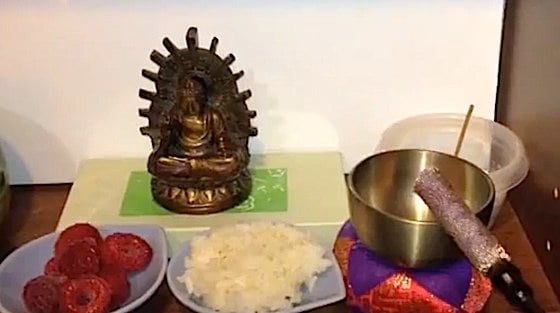
A very simple shrine can be temporarily or permanently set up on a table or shelf for a sick or palliative patient. The Journal for Hospice and Palliative Nursing advises it be in line-of-site for the patient.
This helpful guide, specifically written for Palliative caregivers, gave helpful insights for non-Buddhists who might be caring for a Buddhist: “In all Buddhist traditions, four fundamental contemplations compose the foundation of understanding and meditation: first, that a human rebirth is extremely precious and should be used to its highest spiritual potential; second, that all compounded phenomena are impermanent, and whoever is born is bound to die; third, that beings experience relative reality as compared to ultimate nature that arises interdependently with their own actions; fourth, that all beings suffer, and human beings suffer particularly from birth, sickness, old age, and death.”
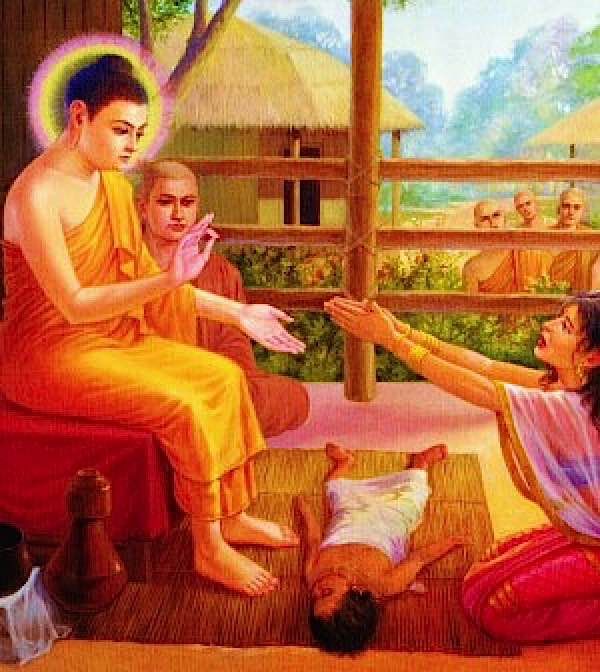
Kisa Gotami repaired to the Buddha and cried: “Lord and Master, give me the medicine that will cure my boy.”
Buddha: The Story of Krisha Gotami and the Mustard Seeds
In this helpful guide for Palliative caregivers, the author uses the commonly cited story of the Mustard Seeds:
“In all Buddhist traditions, four fundamental contemplations compose the foundation of understanding and meditation:[2] first, that a human rebirth is extremely precious and should be used to its highest spiritual potential; second, that all compounded phenomena are impermanent, and whoever is born is bound to die; third, that beings experience relative reality as compared to ultimate nature that arises interdependently with their own actions; fourth, that all beings suffer, and human beings suffer particularly from birth, sickness, old age, and death.”
From the Sacred Text “The Mustard Seed”:
Kisa Gotami repaired to the Buddha and cried: “Lord and Master, give me the medicine that will cure my boy.” The Buddha answered: “I want a handful of mustard-seed.” And when the girl in her joy promised to procure it, the Buddha added: “The mustard-seed must be taken from a house where no one has lost a child, husband, parent, or friend.” Poor Kisa Gotami now went from house to house, and the people pitied her and said: “Here is mustard-seed; take it!” But when she asked Did a son or daughter, a father or mother, die in your family?” They answered her: “Alas the living are few, but the dead are many. Do not remind us of our deepest grief.” And there was no house but some beloved one had died in it.
Kisa Gotami became weary and hopeless, and sat down at the wayside, watching the lights of the city, as they flickered up and were extinguished again. At last the darkness of the night reigned everywhere. And she considered the fate of men, that their lives flicker up and are extinguished. And she thought to herself: “How selfish am I in my grief! Death is common to all; yet in this valley of desolation there is a path that leads him to immortality who has surrendered all selfishness.” [10]

Pages from the Bardo Thodol, sometimes translated as the Tibetan Book of the Dead. The text is often read to the dying, or over the recently deceased in the first few days when the consciousness is thought to “linger” with the body after death.
Tibetan Book of the Dead: “Describes the dying process in detail”
The Journal article cites the importance of palliative workers being familiar with the Tibetan Book of the Dead, and then goes on to summarize high-level understandings that might be comforting to the Buddhist facing end-of-life. Important, especially, is the definition of death, which in various traditions of Buddhism is quite different from the medical definition. Robert Thurman, the respected Tibetan Buddhist teacher, said the Tibetan Book of the Dead “organizes the experiences of the between—(Tibetan, bar-do) usually referring to the state between death and rebirth.” [11]
Leonard Cohen Narrates a Film on The Tibetan Book of the Dead (video):
The author instructs care-professionals from a Tibetan Buddhist point of view, “it is believed that the nexus of consciousness—at its most subtle level of cognizance and movement—can remain in the body for up to 3 days or longer, depending on the circumstances of death. If the body dies by accident or violence, if the body is undisturbed, or if certain rituals are performed to liberate it from the body, the consciousness may exit immediately. In these cases, the body is merely a corpse and nothing unusual needs to be considered. But, after a peaceful death, Tibetan Buddhists are exceptionally concerned about what happens to the body in the moments and days after death, and they try to ensure that the consciousness exits from the crown of the head.”
Helpfully, the article instructs care-givers to inquire who the patient’s teacher may be and cautions the teacher may live far away. The guide also mentions the practice of P’howa, which means “transference of consciousness” as part of the ongoing spiritual training. P’howa prayers may be recited for years prior to the actual time of death.”

Zasep Tulku Rinpoche: “You can do non-traditional Powa … for other people.”
In our extensive interview with Venerable Zasep Rinpoche we did have an opportunity to ask about Powa or P’howa. I asked, “Is Powa practice helpful for the dying (Transferring the Consciousness)?”
Zasep Rinpoche replied, helpfully: “Powa is a Tibetan word, it means “transferring the consciousness.” I usually say, not everybody should practice this. I don’t want to give people the wrong idea. We do Powa practice as a training. When you know you have some illness or you are dying, if you think death come soon, then it’s a good time to practice. But Powa requires instructions. In traditional Powa practice you have visualize chakras and channels and so on.”
Power Meditation guided by H.E. Zasep Rinpoche:
For caregivers, however, Rinpoche had some special advice: “But, you can do a non-traditional Powa—mild Powa, a simple kind of Powa—for other people. Sort of guiding. I call it Powa for the West. For instance if you’re a family member, or in palliative care, and you talk to the patient, you might say as they are dying: ‘You know you are dying now. Let it go. You should go peacefully. As you go, imagine you are going to the Pure Land, or going into the Light, or into Eternal Bliss or Nirvana.’ You could call this kind of help, Powa for the West. It’s not traditional Powa.”
The Zen Master and the Cake
Rinpoche told a story— illustrating the importance of a peaceful death — during the interview:
“I’ll tell you a story of a Zen Master. He was dying. And he told his attendant ‘Bring me my favorite cake!’ Rice cake. While he was munching the rice cake, his consciousness slipped away. He slipped away while enjoying his rice cake. In a way, this was a kind of Powa. He enjoyed his rice cake peacefully, and no sign of struggling, fear, worry, just passing the consciousness peacefully, happily.”

Venerable Thanissaro Bhikku.
Venerable Thanissaro Bhikkhu: When dying, “meditation is the one thing that won’t abandon you”
Dying is the one thing we all will face. Buddhists are usually taught to spend their practice hours in one form or another of meditation: mindfulness, analytical mediation (such as on Death), and visualization.
When the time comes to die, explains Venerable Thanissaro Bhikku, meditation is the one thing that will not abandon you:
“What all this boils down to is that, as long as you are able to survive, meditation will improve the quality of your life, so that you can view pain and illness with equanimity and learn from them. When the time comes to go, when the doctors have to throw up their hands in helplessness, the skill you have been developing in your meditation is the one thing that won’t abandon you. It will enable you to handle your death with finesse. Even though we don’t like to think about it, death is going to come no matter what, so we should learn how to stare it down. Remember that a death well handled is one of the surest signs of a life well lived.” [9]
On a more optimistic note, the Venerable teacher told the story of how meditation help keep a woman with cancer alive:
“You should be very clear on one point: The purpose of meditation is to find happiness and well-being within the mind, independent of the body or other things going on outside. Your aim is to find something solid within that you can depend on no matter what happens to the body. If it so happens that through your meditation you are able to effect a physical cure, that’s all fine and good, and there have been many cases where meditation can have a remarkable effect on the body. My teacher had a student – a woman in her fifties – who was diagnosed with cancer more than 15 years ago. The doctors at the time gave her only a few months to live, and yet through her practice of meditation she is still alive today. She focused her practice on the theme that, ‘although her body may be sick, her mind doesn’t have to be.’ A few years ago I visited her in the hospital the day after she had had a kidney removed. She was sitting up in bed, bright and aware, as if nothing happened at all. I asked her if there was any pain, and she said yes, 24 hours a day, but that she didn’t let it make inroads on her mind.”

The humble actions of a monk at a train station in China captivated the world. The monk bows to the deceased in respect. He holds his hand to comfort him (feature picture top).
The Five Powers: Thought Transformation for a Happy Successful Death
Of course no one wants to die. Without question, we will die. In Buddhism, dying without fear, with peace, with a sense of “happiness” is a key teaching. To that end, the teaching on the Five Powers —similar to the Four Powers widely used in Purification practice — can be helpful. These are:
- The Power of Purification
- The Power of Intention
- The Power of Remorse
- The Power of Prayer
- The Power of Familiarity.
For Tibetan Buddhists, this will immediately resonate. Vajrasattva purification practice encompasses similar steps. In fact, daily Vajrasattva practice, keeps the practicing Vajaryana Buddhist ready for a fearless death (even a sudden, accidental or traumatic death.)
- The First Power, the Power of Purificaiton is basically purification practice (whether focused on Vajrasattva or not.) These are “the 4 powers of regret, reliance, remedy and resolution; give up attachment to your possessions and make offerings of them; meditate upon refuge in the 3 Jewels, give rise to positive thoughts such as Bodhicitta; reaffirm your commitment to whatever spiritual goals and values you cultivated during your life.” [7]
- The Second Power, The Power of Intention This power is mirrored in the Palliative Care Suggestions from the Journal of Hospice and Palliative Nursing article. The key is developing a strong resolution not to let your mind come under the sway of disturbing emotions, even in the face of pain and suffering, and remaining focused on altruism and Bodhichitta.
- The Third Power: The Power or Remorse By meditating on these disturbing emotions, as with all focused meditation, we can make ourselves ready for them to “protect yourself from being overwhelmed by them.”
- The Fourth Power: the Power of Prayer Making strong aspirations and reaffirming commitments not to become separated from the Dharma, Bodhichitta and the prayer to obtain fortunate rebirth in a situation suitable to continue practicing the Dharma.
- The Fifth Power: the Power of Familiarity P’howa practice is one method to become “familiar” and practice for the time of death. “Taking and Giving” practice is also powerful, where we visualize and meditate on “taking on the suffering of other beings” and “giving our blessings” to other beings. For those not trained by a teacher in these methods, meditation on samsara, compassion, impermanence, and Emptiness.
Buddha: Palliative Care as Taught by the Buddha
“He who attends on the sick attends on me,” said the Blessed One, the Buddha. [8]
The Buddha taught extensively on nursing and caring for the sick and dying. On many occasions, Buddha personally cleaned and tended to dying people, personally washing out their puss and wounds, and staying with them, speaking the Dharma, as they passed.
“The Buddha has enumerated the qualities that should be present in a good nurse. He should be competent to administer the medicine, he should know what is agreeable to the patient and what is not. He should keep away what is disagreeable and give only what is agreeable to the patient. He should be benevolent and kind-hearted, he should perform his duties out of a sense of service and not just for the sake of remuneration (mettacitto gilanam upatthati no amisantaro). He should not feel repulsion towards saliva, phlegm, urine, stools, sores, etc. He should be capable of exhorting and stimulating the patient with noble ideas, with Dhamma talk (A.iii,144).” [8]
For Care-Givers: Palliative Care Suggestions for Buddhist at End of Life
In the helpful care-givers article from the Journal of Hospice and Palliative Nursing, several useful suggestions are made. [Please see the full article, cited in our notes, for full details.]
In informing caregivers about the importance of a “peaceful” passing, suggestions included:
- Allow for uninterrupted periods for religious practice, and consider playing meditative audio recordings that are reassuring to the patient, such as mantra or sutra recitation where appropriate.
- Provide an altar with religious photos and relics and keep it in the line of vision of the patient.
- “Specifying who the patient would like to be present at the time of death. The preference may be for no one to be present, especially if family and friends are very emotional or unsupportive of the religious practices.”
- Importance of the attitude of caregivers and visitors: peaceful visits, turn phones off, be relaxed and peaceful.
The article emphasizes the importance of a peaceful environment several times and notes that managing disruptive or upset visitors might be important. During the dying process, the article suggests:
- Do not disturb the patient
- For Tibetan Buddhists especially, leave the body undisturbed for as long as practically possible after death. “Buddhists believe the dying process continues for 3–4 days after what is usually accepted as “dead.” Although many laws do not allow for the body to remain in a natural state for 3–4 days, remain mindful of this to be supportive as the family is approached about the death.”
- “You may want to help the patient sit up in order to practice, or to lie on the right side, which was the position of the Buddha at his death deceased has sometimes been reported as 100 days; however, in the Vajrayana.”
Of special note the author wrote: “the period for special rituals and prayers for the tradition, the period is generally 49 days. Although this may seem like a subtle difference, it is highly relevant in the provision of individualized bereavement services in hospice.”

Event in Toronto July 19, 2019: Meditating on Death and Dying and why it’s important with H.E. Zasep Rinpoche.
NOTES
[1] Two hour interview with Venerable Zasep Tulku Rinpoche at Gaden Choling, fall teaching session 2015, full interview to be published in Buddha Weekly.
[2] Advice on Dying: And Living a Better Life, Dalai Lama
[3] A Year to Live: How to Live This Year as If It Were Your Last, Publisher: Harmony; 1st edition (April 14 1998), ISBN-10: 0609801945, ISBN-13: 978-0609801949
[4] Tricycle Magazine: Interview with Stephen Levine
[5] Levine Talks website.
[6] Journal of Hospice and Palliative Nursing article: “End-of-Life Needs of Patients Who Practice Tibetan Buddhism”
[7] “A Buddhist Guide to Death, Dying and Suffering” — Urban Dharma.
[8] “Ministering to the Sick and Terminally Ill” by Lily de Silva, Urban Dharma
[9] “Using Meditation to Deal with Pain, Illness and Death” Venerable Thanissaro Bhikku, Urban Dharma.
[10] Sacred Text “The Mustard Seed”
[11] Open Culture “Leonard Cohen Narrates Film on The Tibetan Book of the Dead“

The post “Learning how to die” and “Why Meditating on Death May Bring Joy to Life”: What the Buddhist Teachers Say About End of Life, Dying, and Palliative Care appeared first on Buddha Weekly: Buddhist Practices, Mindfulness, Meditation.


 The great master Khenpo Karthar Rinpoche passed away at 3:35pm today (Oct 7, 2019, born April 3, 1924) at 95 years of age (96 years in the Tibetan method of calculating.)
The great master Khenpo Karthar Rinpoche passed away at 3:35pm today (Oct 7, 2019, born April 3, 1924) at 95 years of age (96 years in the Tibetan method of calculating.)
 Khenpo Rinpoche was born in Kham, Tibet, although he was not a tulku. He achieved his realizations in his current lifetime, who entered Thrangu Monastery at twelve years of age. He was ordained from the 11th Tai Situ Rinpoche in Palpung Monastery.
Khenpo Rinpoche was born in Kham, Tibet, although he was not a tulku. He achieved his realizations in his current lifetime, who entered Thrangu Monastery at twelve years of age. He was ordained from the 11th Tai Situ Rinpoche in Palpung Monastery. and elegantly translated by Lama Yeshe Gyamtso, with a foreword by the 17th Gyalwang Karmapa, and prefaces by the Ninth Traleg Kyabgon Rinpoche and the Ninth Khenchen Thrangu Rinpoche
and elegantly translated by Lama Yeshe Gyamtso, with a foreword by the 17th Gyalwang Karmapa, and prefaces by the Ninth Traleg Kyabgon Rinpoche and the Ninth Khenchen Thrangu Rinpoche
























































![A Wheel With Eight Spokes: Why Picking and Choosing "Beliefs" — or "Revisionist" Buddha Dhama — Can Obstruct Your Buddhist Practice 17 Online, there are numerous "interpreted quotes" and "false" quotes from this popular sutta. A lively debate on "fake quotes" from Kalama Sutta on the "Fake Buddha Quotes" website more or less debunks the most common online versions of this teaching. [15]](http://mk0buddhaweeklyqoftb.kinstacdn.com/wp-content/uploads/2015/12/Buddha-Weekly-Quote-from-Kalamata-Sutta-Fake-Buddhism.jpg)









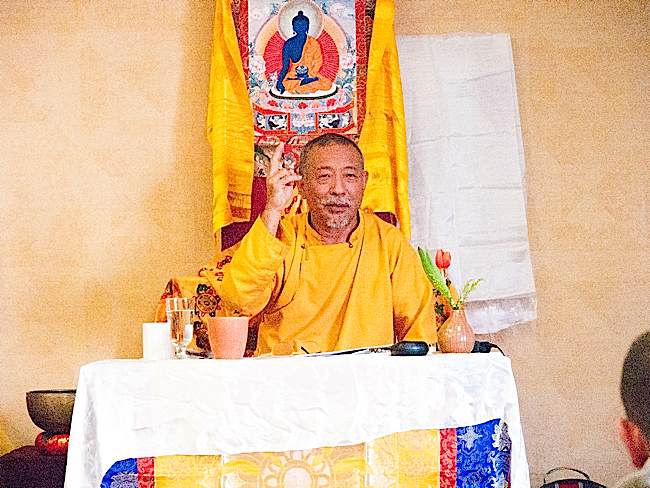




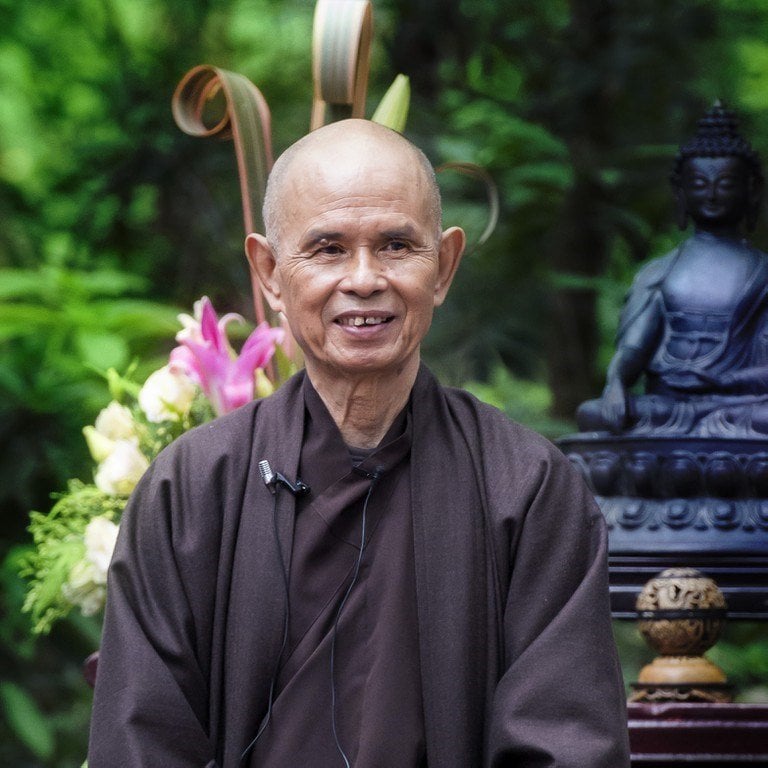
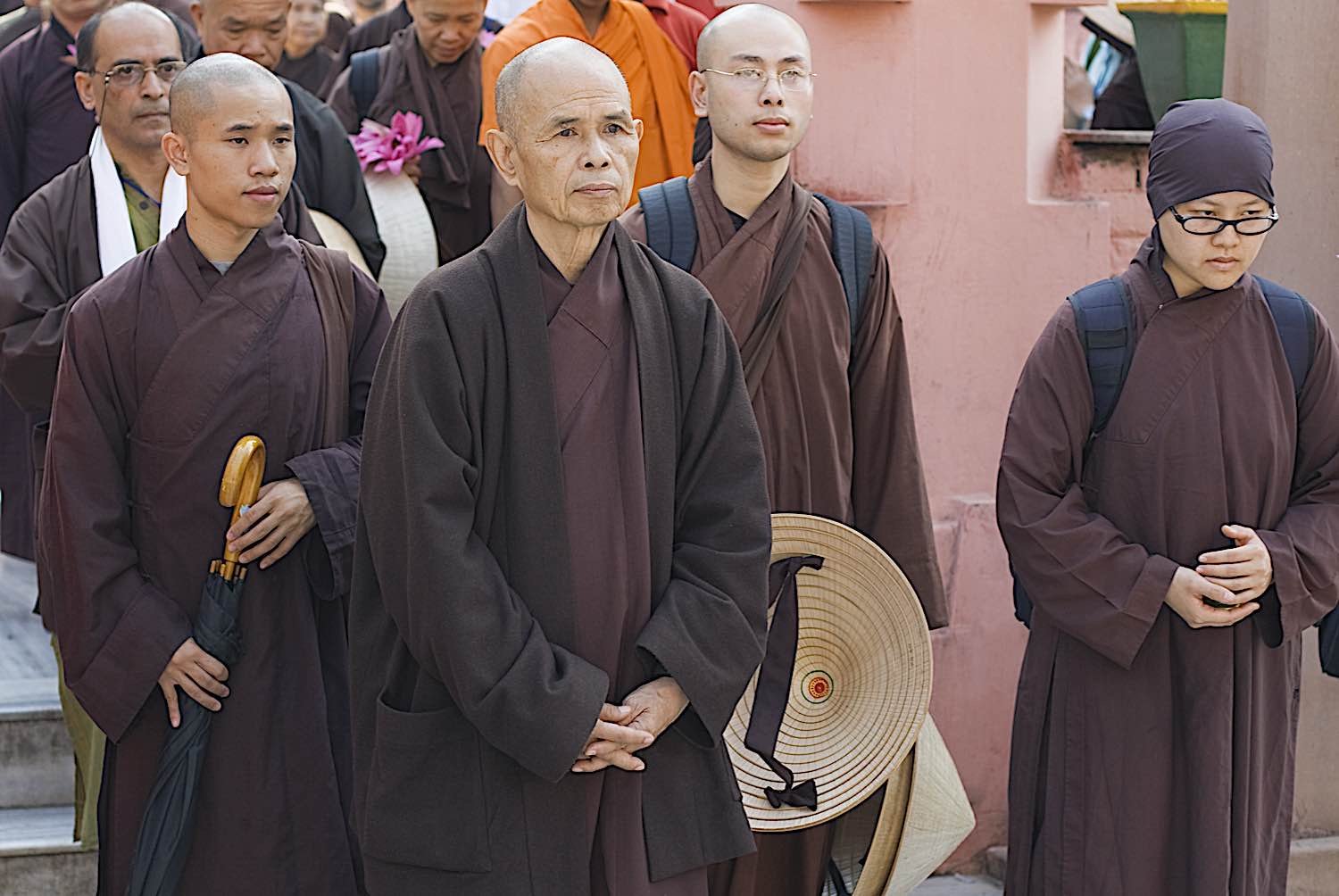






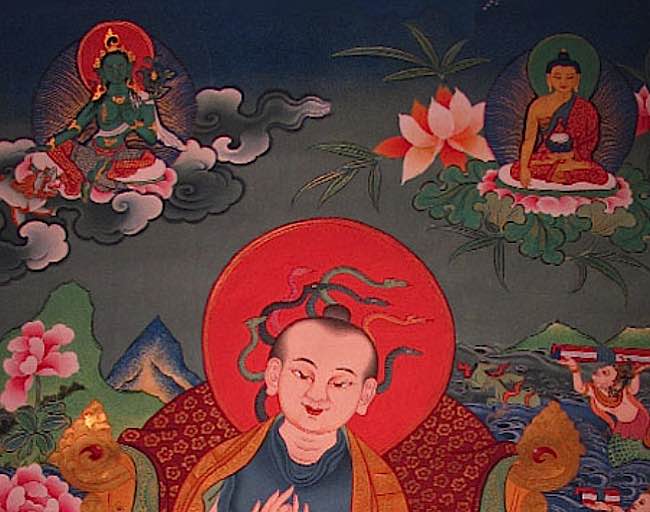
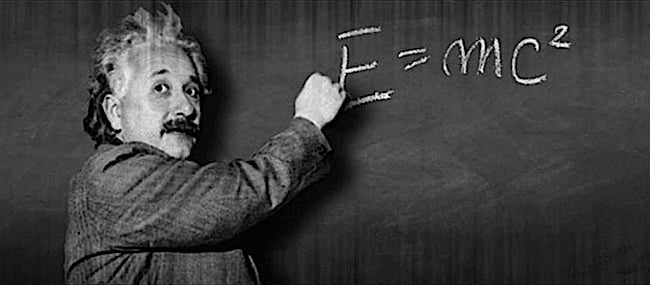


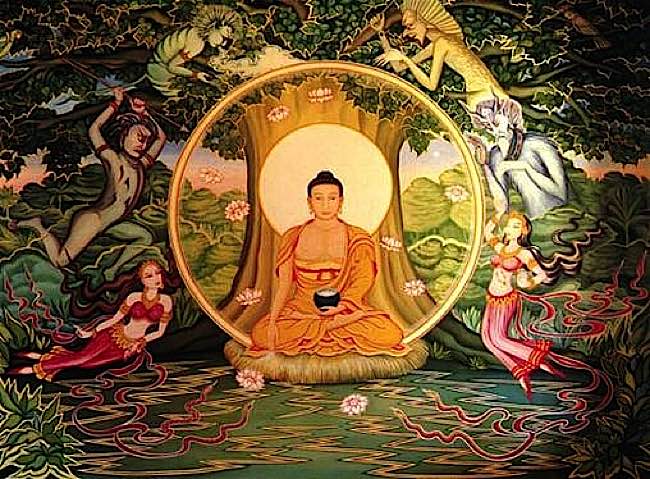
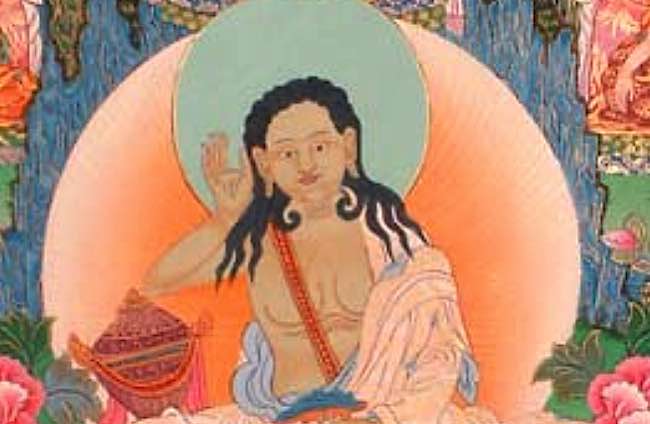
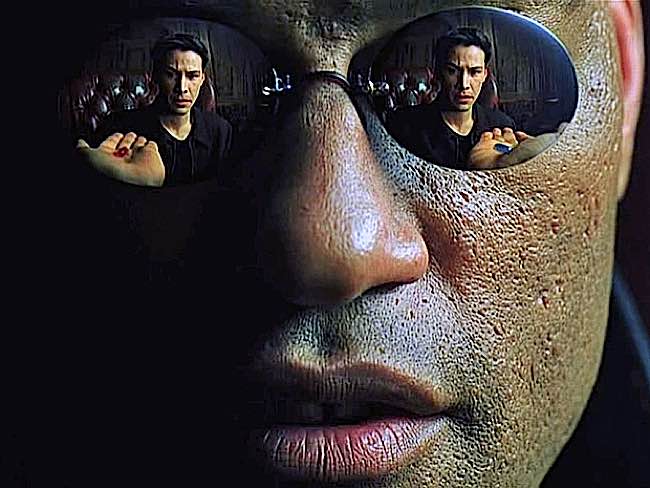
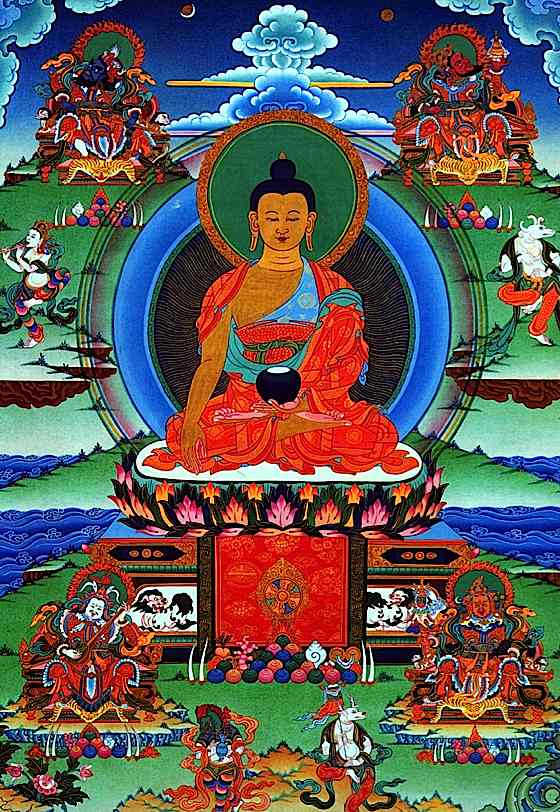
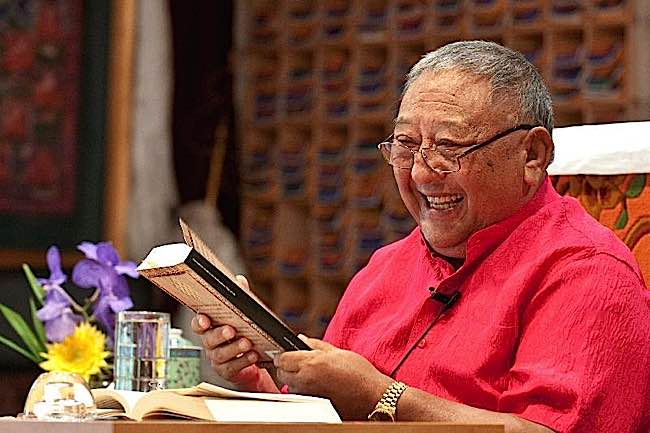
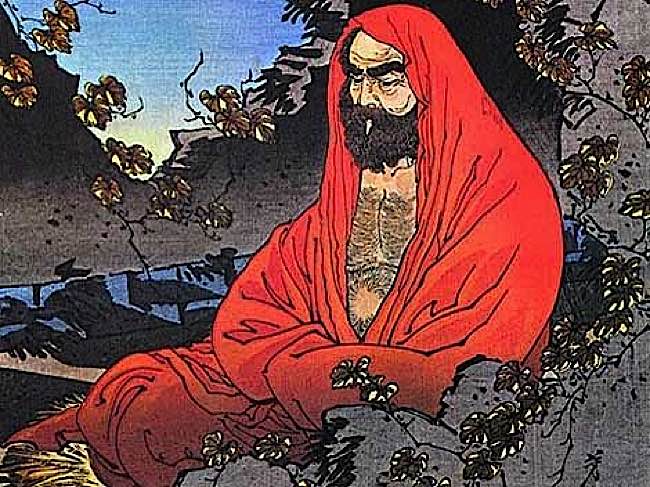

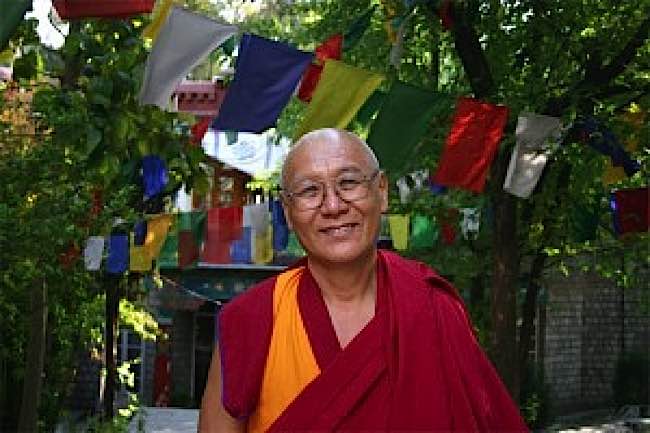
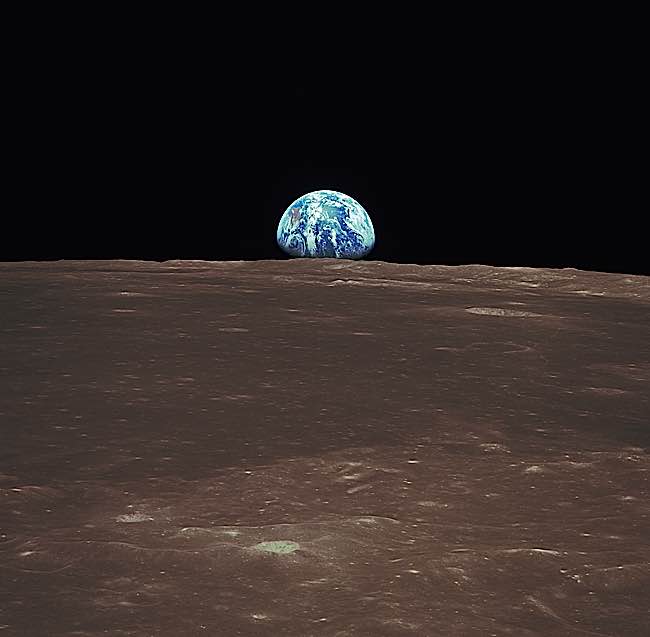






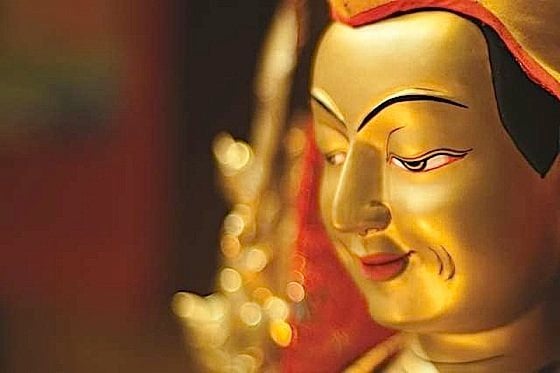
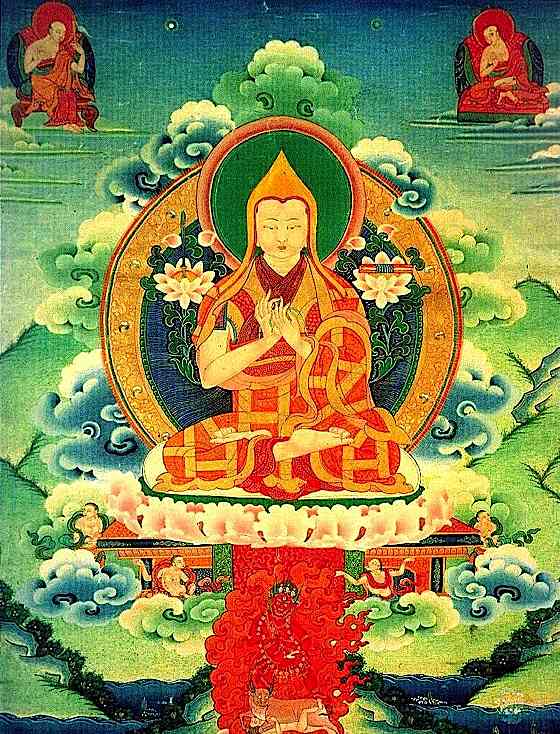








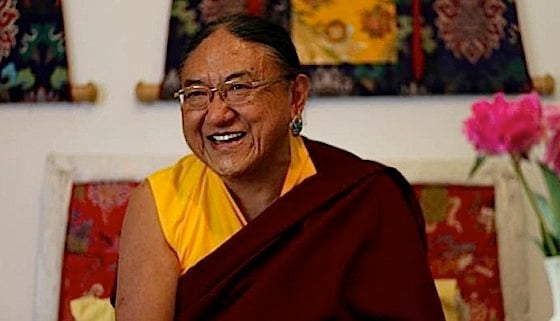
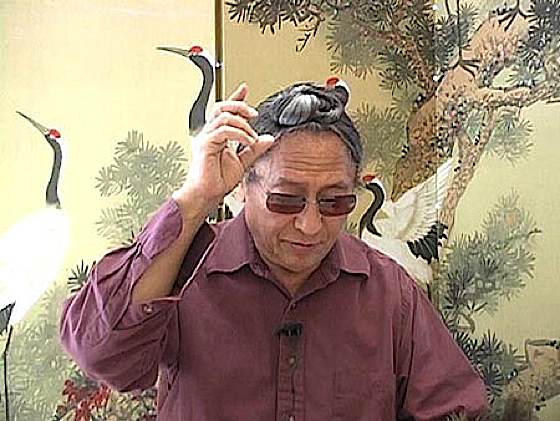

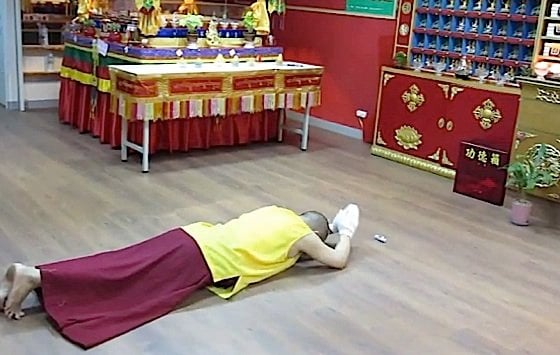
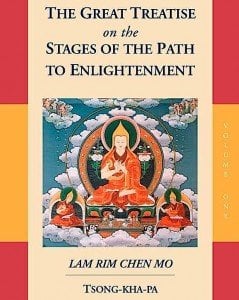
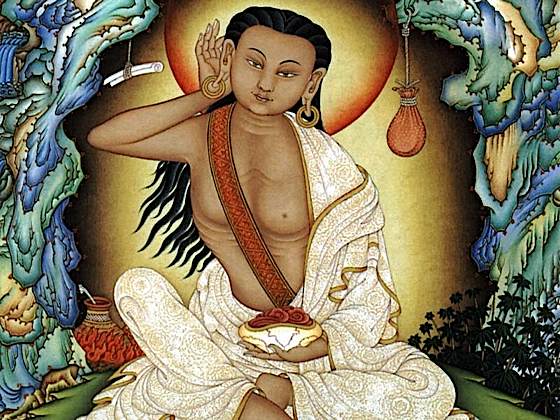
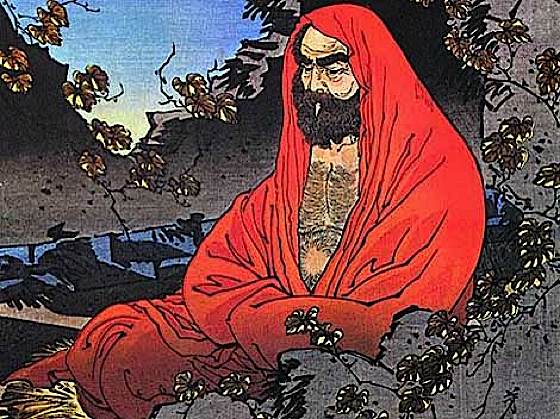
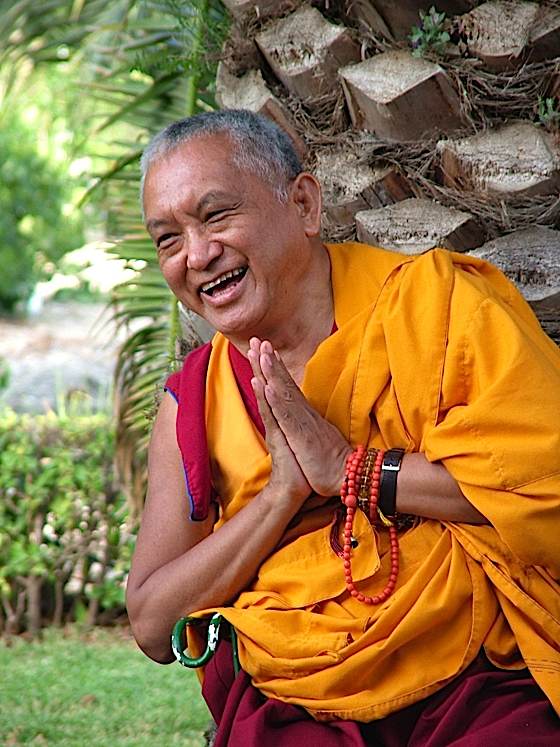
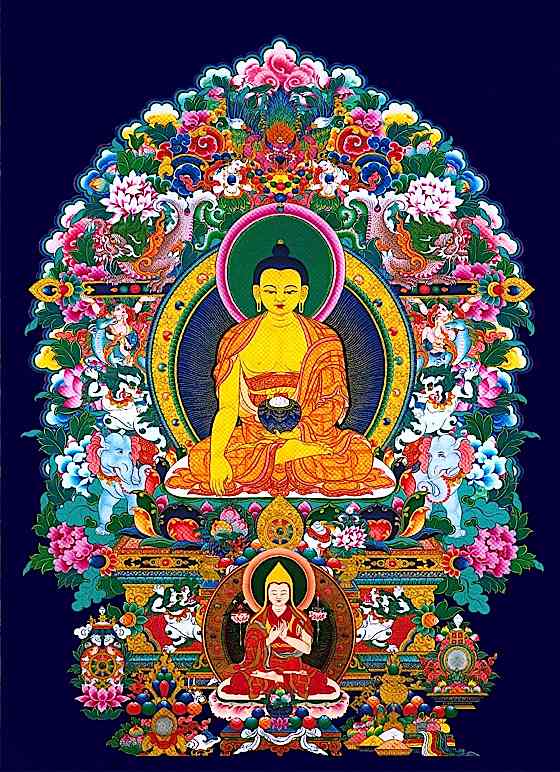
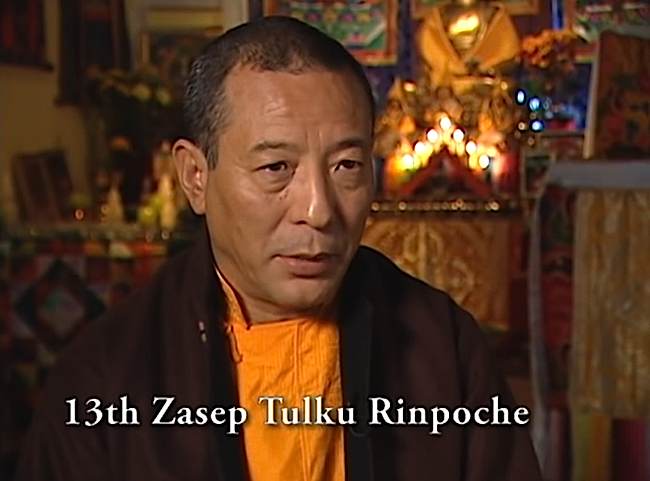
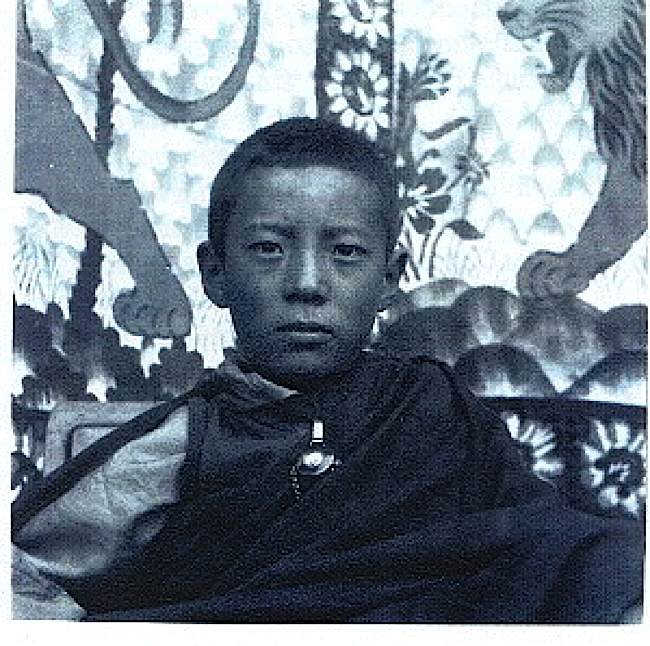
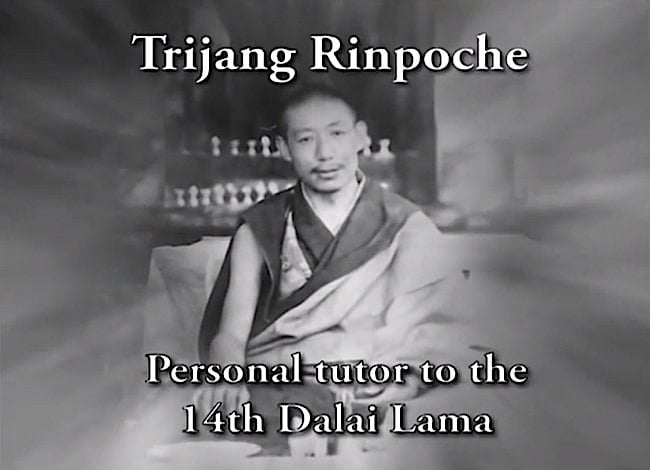
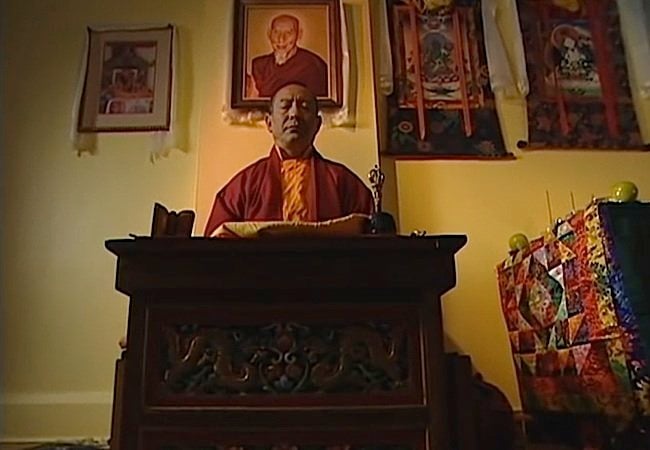
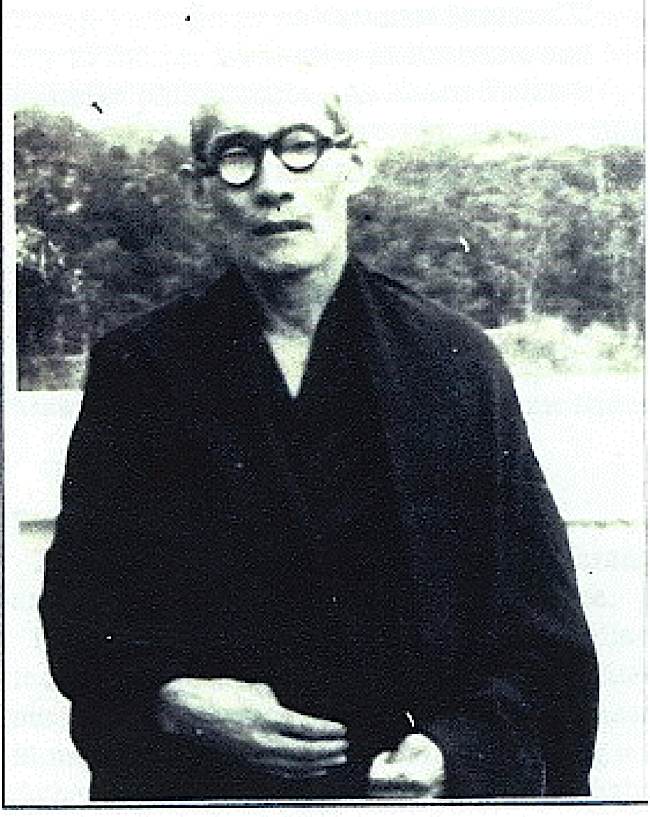
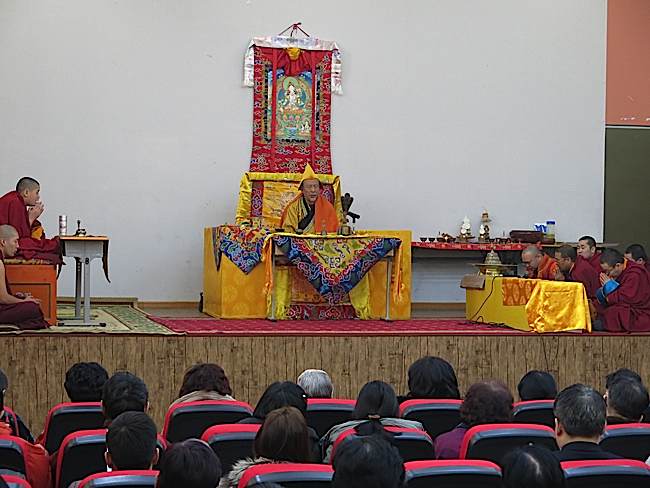
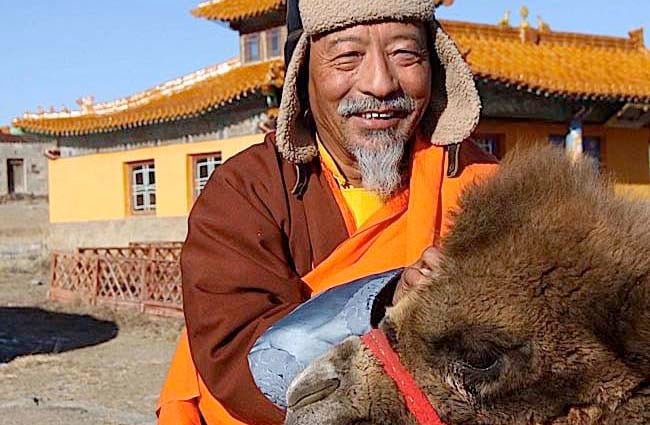
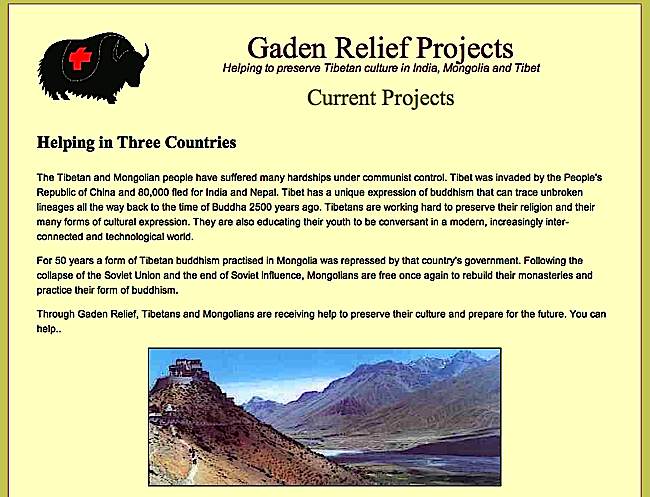
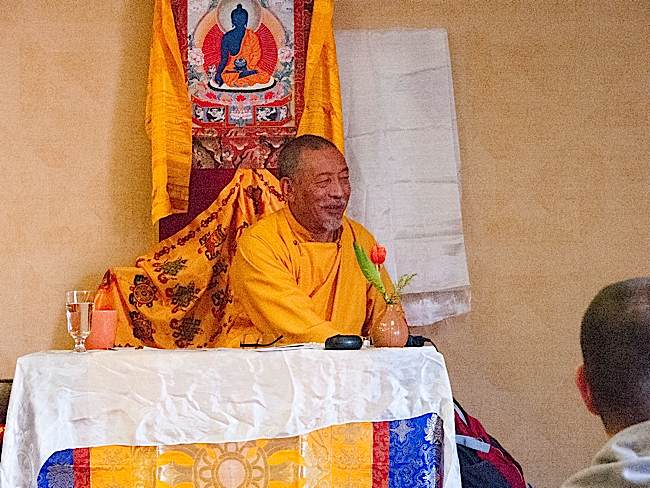

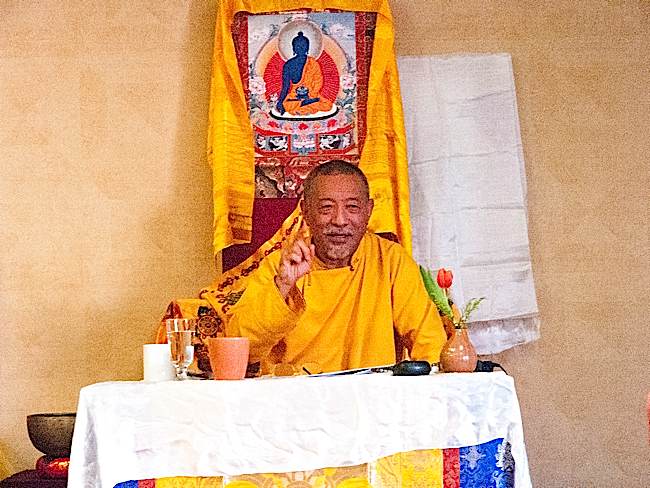

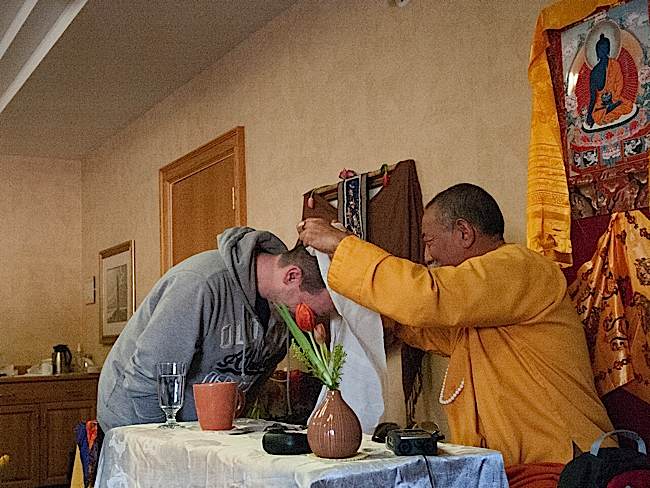
![Much More-Than-Six-Words of Advice — Mindfulness of Body; Anger; and Healing Through Meditation (Mahamudra Teachings Session 2) 543 "For example, if someone has an illness, cancer, it's may not be curable by [conventional] medicine. With meditation, it's still not curable. But the power of healing meditation can help you to live with it, without so much agony, pain, anger, blame... Meditation helps you learn to live with it."](http://buddhaweekly.com/wp-content/uploads/2015/04/Buddha-Weekly-Meditation-against-sunrise-sky-Buddhism.jpg)
